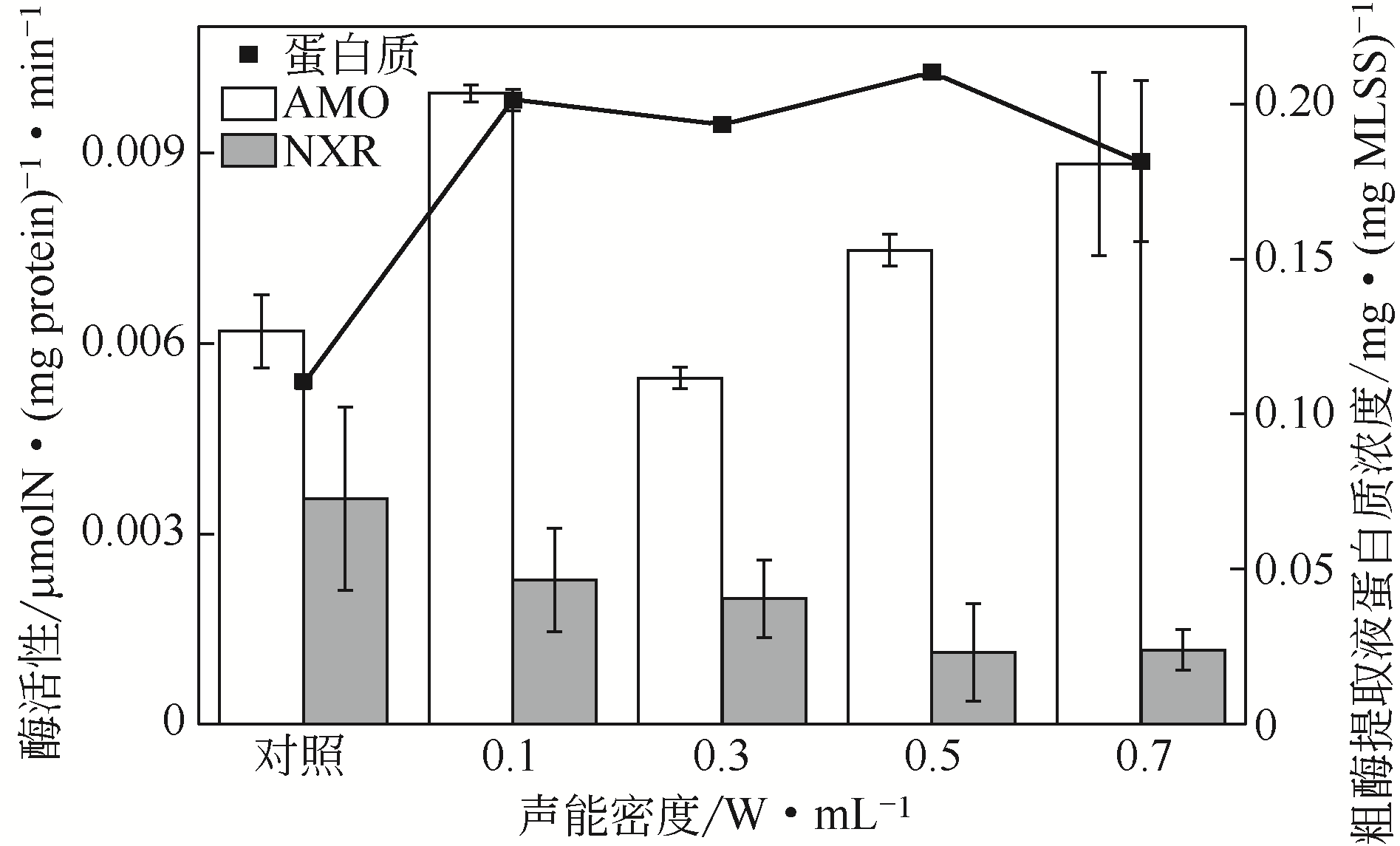| 1 |
黄书昌, 朱易春, 连军锋. 不同曝气量下超声波对污泥沉降性能的影响[J]. 水处理技术, 2019, 45(2): 116-119.
|
|
HUANG S C, ZHU Y C, LIAN J F. Effect of ultrasonic irradiation on sludge sedimentation performance under different aeration rate[J]. Technology of Water Treatment, 2019, 45(2): 116-119.
|
| 2 |
GUO J H, PENG Y J, YANG X, et al. Combination process of limited filamentous bulking and nitrogen removal via nitrite for enhancing nitrogen removal and reducing aeration requirements[J]. Chemosphere, 2013, 91(1): 68-75.
|
| 3 |
GABARRÓ J, GANIGUÉ G, GICH F, et al. Effect of temperature on AOB activity of a partial nitritation SBR treating landfill leachate with extremely high nitrogen concentration[J]. Bioresource Technology, 2012, 126: 283-289.
|
| 4 |
PENG Y Z, ZHU G B. Biological nitrogen removal with nitrification and denitrification via nitrite pathway[J]. Applied Microbiology & Biotechnology, 2006, 73(1): 15-26.
|
| 5 |
ANTHONISEN A C, LOEHR R C, PRAKASAM T B S, et al. Inhibition of nitrification by ammonia and nitrous acid[J]. Water Environment Federation, 1976, 48(5): 835-852.
|
| 6 |
唐欣, 乔森, 周集体. 低强度超声对短程硝化污泥活性的影响[J]. 安全与环境学报, 2017, 17(1): 273-278.
|
|
TANG X, QIAN S, ZHOU Jiti. Influence of the lower intensity ultrasound on the activity of the partial nitrification sludge[J]. Journal of Safety and Environment. 2017, 17(1): 273-278.
|
| 7 |
GE S J, WANG S Y, YANG X, et al. Detection of nitrifiers and evaluation of partial nitrification for wastewater treatment: a review[J]. Chemosphere, 2015, 140: 85-98.
|
| 8 |
GAO S P, LEWIS G D, ASHOKKUMAR M, et al. Inactivation of microorganisms by low-frequency high-power ultrasound: 1. effect of growth phase and capsule properties of the bacteria[J]. Ultrasonics Sonochemistry, 2014, 21(1): 446-453.
|
| 9 |
朱易春, 王佳琪, 章璋, 等. 超声波参数对短程硝化的影响[J]. 中国给水排水, 2018, 34(5): 26-31.
|
|
ZHU Y C, WANG J Q, ZHANG Z, et al. Effect of ultrasound parameters on partial nitrification[J]. China Water & Wastewater. 2018, 34(5): 26-31.
|
| 10 |
PILLI S, BHUNIA P, YAN S, et al. Ultrasonic pretreatment of sludge: a review[J]. Ultrasonics Sonochemistry, 2011, 18(1): 1-18.
|
| 11 |
ZHANG R N, JIN R F, LIU G F, et al. Study on nitrogen removal performance of sequencing batch reactor enhanced by low intensity ultrasound[J]. Bioresource Technology, 2011, 102(10): 5717-5721.
|
| 12 |
王佳琪. 低强度超声波促进短程硝化及其稳定性研究[D]. 赣州: 江西理工大学, 2018. WANG J Q. Enhancement and maintaince of partial nitrification by low-density ultrasound[D]. Ganhzou: Jiangxi University of Science and Technology, 2018.
|
| 13 |
GE S J, PENG Y Z, QIU S, et al. Complete nitrogen removal from municipal wastewater via partial nitrification by appropriately alternating anoxic/aerobic conditions in a continuous plug-flow step feed process[J]. Water Research, 2014, 55: 95-105.
|
| 14 |
BOURNAZOU M N C, HOOSHIAR K, ARELLANO-GARCIA H, et al. Model based optimization of the intermittent aeration profile for SBRs under partial nitrification[J]. Water Research, 2013, 47(10): 3399-3410.
|
| 15 |
国家环境保护总局. 水和废水监测分析方法[M]. 4版. 北京: 中国环境科学出版社, 2006.State Environmental Protection Administration. Standard methods for water and wastewater analysis[M]. 4th ed. Beijing: China Environmental Science Press, 2006.
|
| 16 |
JULOETTE L Y, HYMAN M R, ARP D J. Inhibition of ammonia oxidation in nitrosomonas europaea by sulfur compounds: thioethers are oxidized to sulfoxides by ammonia monooxygenase[J]. Applied and Environmental Microbiology, 1993, 59(11): 3718-3727.
|
| 17 |
OTTE S, SCHALK J, KUENEN J G, et al. Hydroxylamine oxidation and subsequent nitrous oxide production by the heterotrophic ammonia oxidizer alcaligenes faecalis[J]. Applied Microbiology and Biotechnology, 1999, 51(2): 255-261.
|
| 18 |
MA B, WANG S, LI Z W, et al. Magnetic Fe3O4 nanoparticles induced effects on performance and microbial community of activated sludge from a sequencing batch reactor under long-term exposure[J]. Bioresource Technology, 2017, 225: 377-385.
|
| 19 |
XIAO K K, CHEN Y, JIANG X, et al. Characterization of key organic compounds affecting sludge dewaterability during ultrasonication and acidification treatments[J]. Water Research, 2016, 105: 470-478.
|
| 20 |
LI J B, YE W, WEI D, et al. System performance and microbial community succession in a partial nitrification biofilm reactor in response to salinity stress[J]. Bioresource Technology, 2018, 270: 512-518.
|
| 21 |
林秋健. 厌氧氨氧化反应器效能及其指示酶研究[D]. 杭州: 浙江大学, 2019. LIN Q J. Performance and indicator enzyme of ANAMMOX reactor[D]. Hangzhou: Zhejiang University, 2019.
|
| 22 |
王梦杰, 员建, 马华继, 等. 低强度超声波对膨胀活性污泥沉降性能及污泥减量的影响[J]. 化工进展, 2017, 36(3): 1134-1139.
|
|
WANG M J, YUAN J, MA H J, et al. Effects of low intensity ultrasonic treatment on settleability of bulking sludge and sludge reduction[J]. Chemical Industry and Engineering Progress, 2017, 36(3): 1134-1139.
|
| 23 |
WANG F, MA A Z, GUO C, et al. Ultrasound-intensified laccase production from trametes versicolor[J]. Ultrasonics Sonochemistry, 2013, 20(1): 118-124.
|
 ),朱易春1(
),朱易春1( ),张光明2,连军锋1,章璋1,李鑫1,黄书昌1,田帅1,袁佳彬1
),张光明2,连军锋1,章璋1,李鑫1,黄书昌1,田帅1,袁佳彬1
 ),Yichun ZHU1(
),Yichun ZHU1( ),Guangming ZHANG2,Junfeng LIAN1,Zhang ZHANG1,Xin LI1,Shuchang HUANG1,Shuai TIAN1,Jiabin YUAN1
),Guangming ZHANG2,Junfeng LIAN1,Zhang ZHANG1,Xin LI1,Shuchang HUANG1,Shuai TIAN1,Jiabin YUAN1



